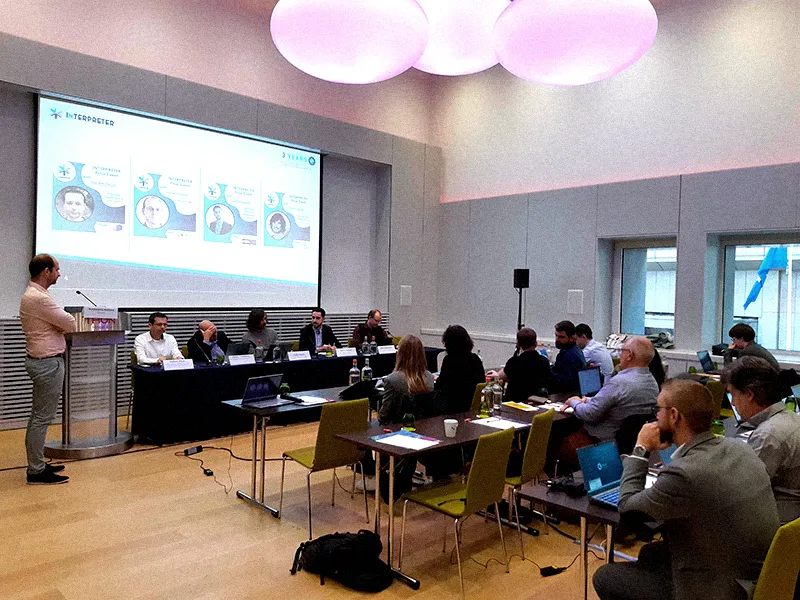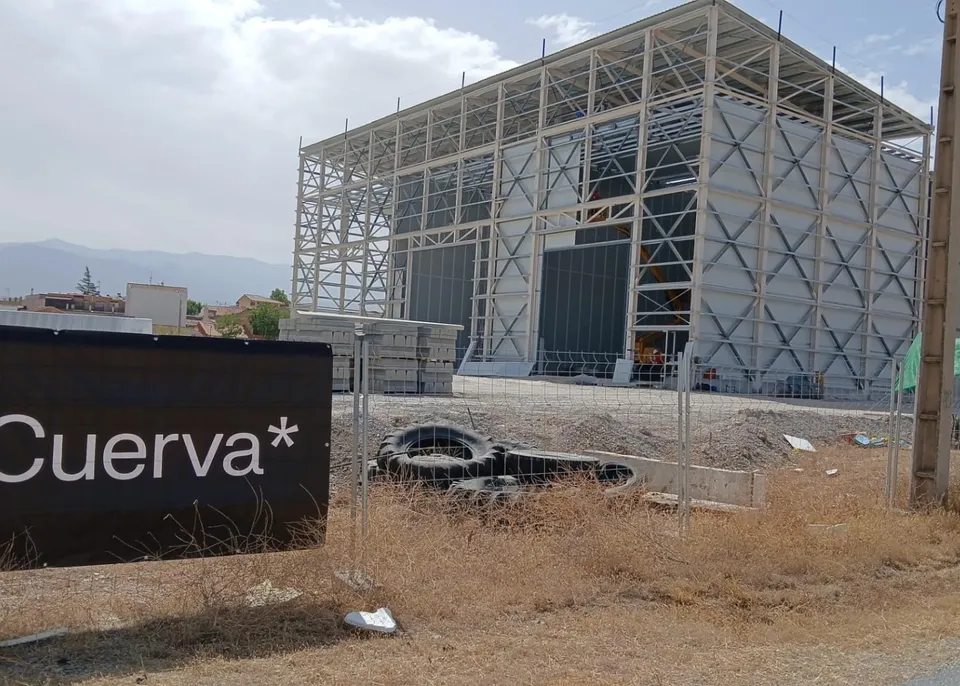DSOs will have new interoperable tools for better management

The European INTERPRETER project concluded on 30 September 2022 after 36 months of work and its final conference was held in Brussels within the framework of the European Sustainable Energy Days.
The project was funded with €4 million from the European Union Horizon 2020 innovation and development framework programme under grant agreement No. 864360.
The final conference on 28 September brought together the main representatives of the companies, organisations and national and European institutions that formed the strong project consortium: Cuerva as a network operator and the project’s main pilot in Spain, Circe as the project's coordinating leader together with Atos and Turning Tables (technology providers), CARTIF, R&D Nester, CERTH, DTU (research and educational centres) and Ores (also as a network operator and pilot). The session, which was open to the European public and extremely well-received, featured presentations of the compiled results and discussion on how to harness the opportunities provided by the tools developed by the project.
A good grid model enables advanced monitoring, operation, maintenance and planning
The overall goal of the INTERPETER project is to develop a modular network management solution comprised of a set of online and offline software tools for the design, planning, operation and maintenance of electrical grids and a specific focus on the distribution network. This set of tools will be provided to network operators through an open-source software platform. The aim is to help distribution system operators (DSOs) and transmission system operators (TSOs) to transition from a traditional network management approach to an active system management approach that addresses the entire energy system (at both the distribution and transmission levels) and considers rapid deployment of distributed energy resources – such as variable renewable energy sources and storage – as well as the constantly-increasing environmental concerns.
Harmonised data formats and a good grid model enhance non-technical loss detection for network operators
The partners shared their overall viewpoints on the results during the conference in Brussels including their ideas about the interoperability tools and how they can contribute to enhancing network management efficiency and improving grid stability.
To ensure that the applications effectively meet the needs of end-users and to achieve widespread impact, three representative companies from the European energy sector were selected as demo sites, each with different data availability parameters for testing and validation of the applications in various scenarios: Ores, a Belgian DSO, as the demo site with low data availability; Cuerva, a Spanish DSO, as the demo site with medium data availability and DTU, a technological institute, as the demo site with high data availability.
Ores is a medium-large DSO (around 1.3 million electric power customers) with a low degree of monitoring and data availability (it does not use advanced metering infrastructures (AMI)). Cuerva is a smaller DSO (around 35,000 consumers) with high monitoring and data availability (AMI deployed on 99% of its network).
DTU is a Danish technological institute with a laboratory called Syslab on its premises engaged in testing and validating algorithms and control elements. These organisations have reported their experience and lessons learned regarding how the INTERPRETER tools have helped to improve their grid model and its resilience, thereby providing end users with an increasingly high-quality service, enhanced grid resilience and improved supply-quality parameters.
A testing environment in Granada under the watchful eye of Europe
Cuerva's main contribution to the INTERPRETER project was its role as a network operator. As a distribution network operator, the company provides energy to more than 18,000 users located mainly in rural areas in the vicinity of the city of Granada. It has put a comprehensive infrastructure in place composed of more than 500 transformer substations and 2 distribution substations, one of which is connected to the Spanish national grid operator, Red Eléctrica, to deliver power to said end users. Innovation projects in the distribution network have three primary goals: to improve end-user supply quality, to automate operation of the grid and to enhance its resilience by integrating new renewable assets and distributed resources without investing in traditional solutions.
As Pablo López, one of Cuerva’s smart-network engineers put it during his interactive presentation at the Brussels conference: “although all the tools developed in the project will help us make data-driven strategic decisions to improve operation, planning and maintenance of the grid, perhaps the most important application for us is the grid-modelling tool because it forms the basis that all the other INTERPRETER tools need in order to work. The first step towards digitalisation of electrical distributors is to create a digital twin of its network to which the various tools and advanced algorithms can be applied in order to analyse and understand both its current and future states. This will enable management to detect in advance any supply quality issues due the massive integration of renewable resources we are experiencing.”
However, it is also true that “DSOs must make an effort to digitise the network and to build clean, high-quality databases, since data is a fundamental asset for the digitalised distributor.”
On the other hand, there is a risk that the tools we use and the outcomes we obtain are not accurate and fail to give an accurate picture of reality.
Other players related to the project joined the demo site participants for the rest of the day and also took part in an interactive session to share outcomes, best practices and the synergies with other projects being developed in the current European scenario in order to prepare the way for future joint ventures. Among them, Prof. Thierry Coosemans (project coordinator of the RENAISSANCE project) noted that “we need to have a more uniform, transparent and cooperative framework to address structural barriers and improve regulatory compliance.”
As a final result, the consortium’s proportional composition between research institutions and private organisations ensured an ideal balance between technology and research activity and transfer of technology to the market. This close collaboration of all the partners provided a series of representative use cases that will ensure the replicability and adoption of the INTERPRETER solution throughout Europe.


.webp)

